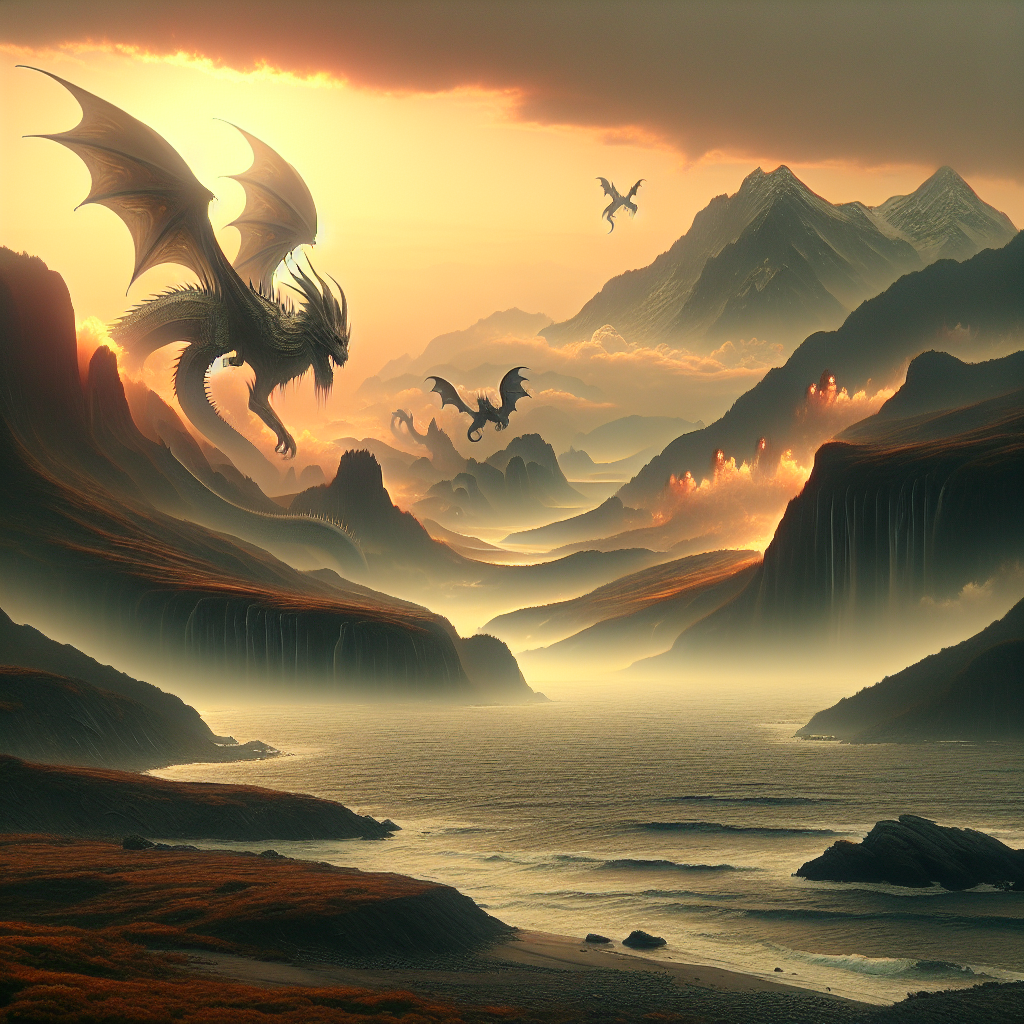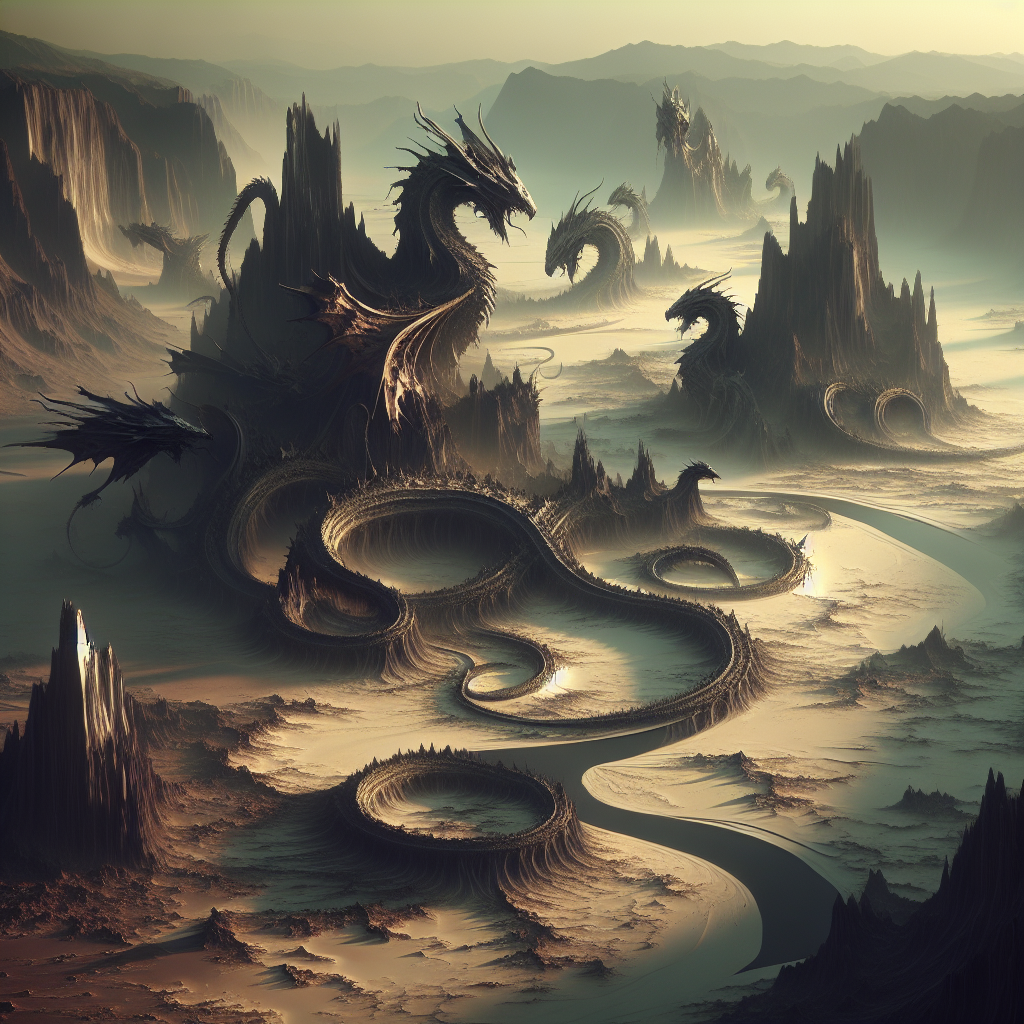Remembering the Dragons

The Mythology And Legends Of Dragons
Dragons have long captivated the human imagination, weaving their way through the mythology and legends of cultures around the world. These mythical creatures, often depicted as enormous, fire-breathing reptiles with wings and formidable claws, have been both feared and revered throughout history. The origins of dragon myths are as diverse as the cultures that tell their tales, yet they share common themes that speak to the universal human experience.
In ancient China, dragons were seen as benevolent and powerful beings, symbolizing strength, wisdom, and good fortune. Unlike their Western counterparts, Chinese dragons were often associated with water and weather, believed to control rainfall and rivers. The dragon was also a symbol of imperial power, with emperors claiming to be descendants of dragons. This reverence is evident in the Chinese zodiac, where the dragon is one of the twelve animals, representing a year of prosperity and success.
Conversely, in Western mythology, dragons were often portrayed as malevolent creatures to be vanquished by heroes. The image of the dragon as a fearsome adversary can be traced back to ancient Greek and Roman myths. For instance, the Greek hero Heracles (Hercules) is famed for slaying the Lernaean Hydra, a multi-headed dragon-like beast. Similarly, in Norse mythology, the dragon Fafnir, who hoarded a vast treasure, was slain by the hero Sigurd. These stories reflect the human struggle against chaos and the quest for order and justice.
Transitioning to the medieval period, dragons became central figures in European folklore and Christian symbolism. The legend of Saint George and the Dragon is one of the most enduring tales from this era. According to the legend, Saint George, a Christian knight, saved a princess from a dragon that terrorized a town, symbolizing the triumph of good over evil and the power of faith. This narrative was widely popularized during the Crusades, reinforcing the image of the dragon as a symbol of paganism and heresy to be defeated by Christian virtue.
In addition to their roles in mythology and religion, dragons have also been prominent in literature and art. The epic poem “Beowulf,” one of the most important works of Old English literature, features a dragon as the final adversary that the hero must face. This dragon, guarding a hoard of treasure, represents both a physical and existential challenge for Beowulf, underscoring themes of mortality and legacy. Similarly, in J.R.R. Tolkien’s “The Hobbit,” the dragon Smaug embodies greed and destruction, posing a significant threat to the protagonist and his companions.
Despite their fearsome reputation, dragons have also been depicted as wise and noble creatures in various cultural narratives. In Japanese folklore, the dragon Ryujin is a sea god who possesses great wisdom and power, often aiding humans in times of need. This duality in dragon mythology—where they can be both protectors and destroyers—reflects the complex nature of these mythical beings and their enduring appeal.
As we remember the dragons of mythology and legend, it is clear that these creatures have left an indelible mark on human culture. They embody our deepest fears and highest aspirations, serving as symbols of power, wisdom, and the eternal struggle between good and evil. Through their stories, dragons continue to inspire awe and wonder, reminding us of the rich tapestry of human imagination and the timeless nature of myth.
Cultural Significance Of Dragons In Ancient Civilizations

Dragons have long held a place of prominence in the mythologies and cultural narratives of ancient civilizations, symbolizing a range of concepts from power and wisdom to chaos and destruction. These mythical creatures, often depicted as serpentine or reptilian, have been revered and feared across various cultures, each attributing unique characteristics and significance to them. The cultural significance of dragons in ancient civilizations is a testament to their enduring legacy and the universal human fascination with these formidable beings.
In ancient China, dragons were considered benevolent and auspicious creatures, embodying strength, power, and good fortune. Unlike their Western counterparts, Chinese dragons were often associated with water and weather, believed to control rain, floods, and typhoons. The dragon was also a symbol of imperial authority, with the emperor himself being regarded as the “Son of the Dragon.” This reverence is evident in the numerous dragon motifs found in Chinese art, architecture, and literature, where they are depicted as wise and noble beings. The dragon dance, performed during the Chinese New Year, is a vibrant tradition that continues to celebrate the dragon’s significance in Chinese culture.
Transitioning to the West, dragons in European mythology were often portrayed as malevolent creatures, embodying chaos and destruction. These dragons were typically depicted as fire-breathing monsters, hoarding treasures and terrorizing villages. The legend of Saint George and the Dragon is a quintessential example, where the dragon represents evil that must be vanquished by the virtuous hero. This narrative reflects the broader cultural themes of good versus evil and the triumph of order over chaos. Medieval literature and art are replete with such depictions, reinforcing the dragon’s role as a formidable adversary in the Western imagination.
In contrast, the dragons of ancient Mesopotamia were complex figures, embodying both protective and destructive qualities. The Sumerian god Enki, for instance, was often associated with a dragon-like creature called the “mušḫuššu,” which served as a protective emblem. Conversely, the Babylonian creation myth, the Enuma Elish, features the dragon Tiamat, a primordial goddess of chaos who is ultimately defeated by the god Marduk. This duality highlights the dragon’s multifaceted nature in Mesopotamian culture, symbolizing both the protective and chaotic forces of the universe.
Similarly, in ancient India, dragons or serpent-like beings known as “nagas” were revered as powerful deities associated with water and fertility. The nagas were believed to inhabit the subterranean realms and were often depicted as guardians of treasures and sacred places. In Hindu and Buddhist traditions, nagas are frequently portrayed as both benevolent and wrathful, capable of bestowing blessings or unleashing destruction. This ambivalence underscores the naga’s role as a mediator between the earthly and divine realms, reflecting the complex interplay of forces in the natural world.
The cultural significance of dragons in ancient civilizations is further exemplified by their presence in Mesoamerican mythology. The Aztec god Quetzalcoatl, often depicted as a feathered serpent, was a symbol of wisdom, wind, and learning. Quetzalcoatl’s association with creation and civilization underscores the dragon’s role as a bringer of knowledge and order. Similarly, in Mayan culture, the Vision Serpent was a conduit for communication between the mortal and divine worlds, emphasizing the dragon’s role as a bridge between different realms of existence.
In conclusion, the dragon’s enduring presence in the mythologies of ancient civilizations highlights its universal appeal and multifaceted symbolism. Whether as a benevolent guardian, a fearsome adversary, or a mediator between worlds, the dragon has captivated human imagination for millennia. This cultural significance underscores the dragon’s role as a powerful symbol of the forces that shape our world, reflecting the timeless human quest to understand and navigate the complexities of existence.
Modern Interpretations And Representations Of Dragons In Media
In contemporary media, dragons have undergone a fascinating evolution, transforming from ancient mythological creatures into multifaceted symbols that permeate various forms of storytelling. This metamorphosis is not merely a superficial change but rather a reflection of the shifting cultural, social, and psychological landscapes that shape modern narratives. As we delve into the modern interpretations and representations of dragons, it becomes evident that these mythical beings have retained their allure while adapting to the demands of contemporary audiences.
To begin with, dragons in modern media often serve as complex characters rather than mere antagonistic forces. This shift is particularly evident in literature and film, where dragons are frequently portrayed with intricate personalities and motivations. For instance, in J.K. Rowling’s “Harry Potter” series, dragons are depicted as majestic and formidable creatures, yet they are also shown to be capable of forming bonds with humans. Similarly, in George R.R. Martin’s “A Song of Ice and Fire” series, dragons are not only symbols of power and destruction but also embody themes of loyalty and kinship. These nuanced portrayals allow dragons to resonate with audiences on a deeper emotional level, transforming them from mere monsters into relatable characters.
Moreover, the visual representation of dragons has also evolved significantly. Advances in technology, particularly in the realms of computer-generated imagery (CGI) and animation, have enabled creators to bring dragons to life with unprecedented realism and detail. Films such as “The Hobbit” trilogy and the television series “Game of Thrones” showcase dragons with intricate scales, lifelike movements, and expressive features, making them more believable and awe-inspiring than ever before. This technological prowess not only enhances the visual spectacle but also allows for more dynamic storytelling, as dragons can now interact seamlessly with human characters and environments.
In addition to their roles in literature and film, dragons have also found a prominent place in video games, where they often serve as both adversaries and allies. Games such as “The Elder Scrolls V: Skyrim” and “Dragon Age: Inquisition” feature dragons as central elements of their narratives, offering players the opportunity to engage with these creatures in interactive and immersive ways. The interactivity of video games allows for a unique exploration of dragon lore, as players can experience firsthand the challenges and rewards of encountering these mythical beings. This interactive dimension adds a layer of personal engagement that is distinct from passive forms of media consumption.
Furthermore, the symbolic significance of dragons has also been reinterpreted in modern contexts. Traditionally, dragons have been associated with themes of chaos, power, and the unknown. However, contemporary representations often imbue dragons with additional layers of meaning, reflecting current societal concerns and values. For example, in environmental narratives, dragons are sometimes depicted as guardians of nature, embodying the delicate balance between humanity and the natural world. This reinterpretation aligns with growing awareness of environmental issues and the need for sustainable coexistence with our planet.
In conclusion, the modern interpretations and representations of dragons in media illustrate a dynamic interplay between tradition and innovation. While dragons continue to captivate audiences with their mythical allure, their evolving portrayals reflect the changing cultural and technological landscapes of contemporary storytelling. By embracing complexity, leveraging technological advancements, and reinterpreting symbolic meanings, modern media has ensured that dragons remain a powerful and enduring presence in our collective imagination.

